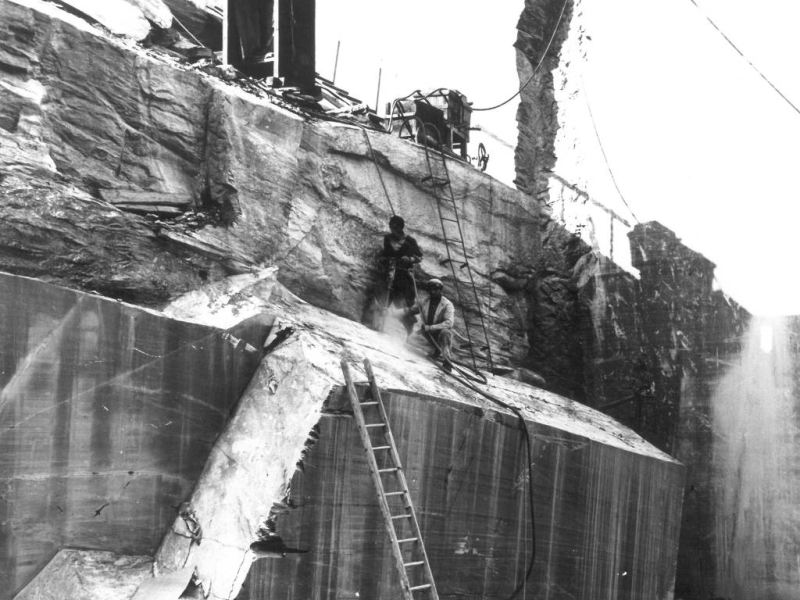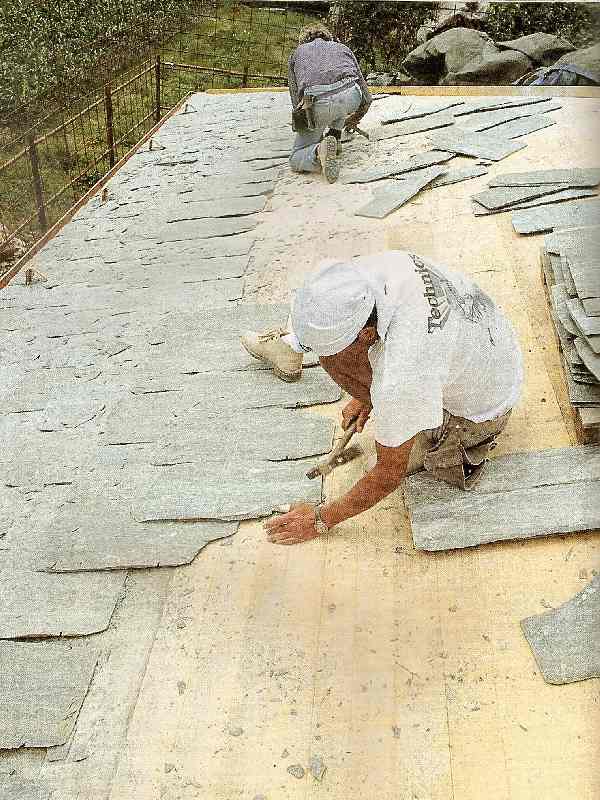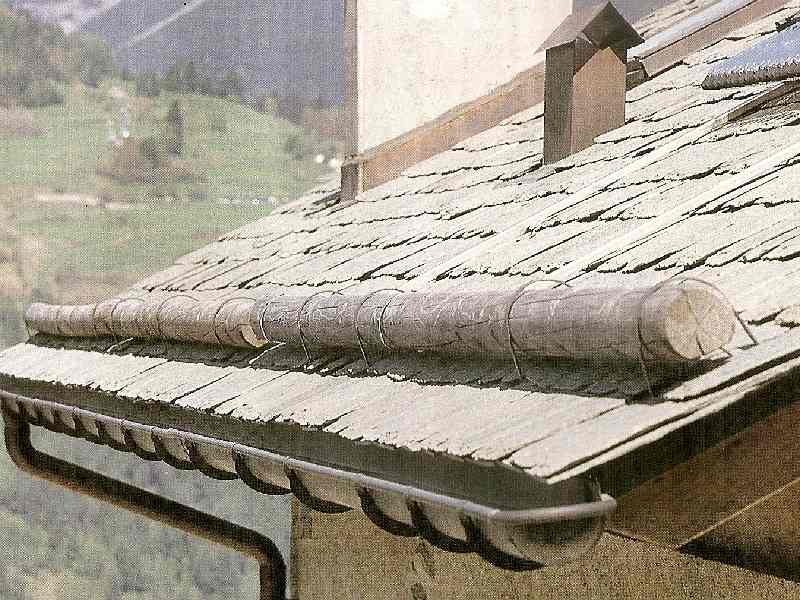 Preparation of the explosive drill hole in a serpentine stone quarry.
Preparation of the explosive drill hole in a serpentine stone quarry.
Towards the end of the 19th century, following the construction of the carriageable road of the Valmalenco as far as Chiesa, which reached the site of the Giovello, thanks to the work of the quarrymen, a new category of craft arose in the village, that of the “carters”.
Soon, they became split tile traders and, with the advent of motorised means of transport in the early 20th century, they became truck drivers, even though they kept the old name of carters and continued their trading.
The split tiles became more popular and were well-known and transported way beyond the Valtellina.
At the same time, a revolutionary way of excavating the rock was introduced to Giovello.
Instead of following the descending rock "face" as they had always done, a few companies decided to drill the rock horizontally.
It was a success.
The largest expanse of serpentine rock was then extracted and the lots were taken outside on little wagons running on tracks.
 Laying semi-course roofing tiles.
Laying semi-course roofing tiles.
After the stagnation during the Second World War, the demand for the roofing tile rose sharply: the traders and the producers directly introduced its special qualities to the technicians and constructors of even far-off villages who, once they saw the merits of the material, began to use it to build large houses.
Towards the end of the 1980s, the Giovello quarries became increasingly precarious and used less, until work there was completely abandoned.
Nevertheless, production of the roofing tile did not stop there.
It continued in the quarries on the opposite left-hand bank of the torrent which, over thousands of years, had divided the single, large seam of serpentine stone into two.
Today, the business relies strongly on the support of modern technologies for the open air production of the "piode".
The most recent quarries of Agnisci, Sellette and Alpe Fora operate with the same methods and criteria.
Modern machinery has also been installed in the numerous craft laboratories, which were set up at the “giovellai” quarries in the various locations to replace the old lean-to huts.
 Detail of a beautiful roof of slate tiles.
Detail of a beautiful roof of slate tiles.
Of the entire cycle of ancient manual work to produce the split roofing tile, the division of the lots into tiles and the method of finishing the edges has remained unchanged.
The last sixty years have seen the formation of a large group of local craftsmen, known as “i teciàt” (the roof coverers), specialised in laying the slates.
From the end of the Second World War, the split roofing tiles have gradually become more widespread.
First, the poeple of Valmalenco were proud to see a beautiful tiled roof on a villa in Milan, a few hundred metres from the Duomo.
This seemd to be a great success.
Now, these roofs are showcased throughout Europe, and the tiles of Valmalenco have crossed the ocean and have landed on all the continents.